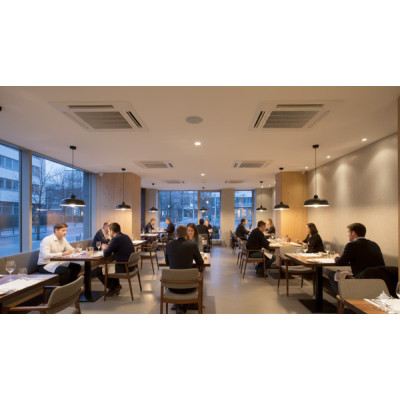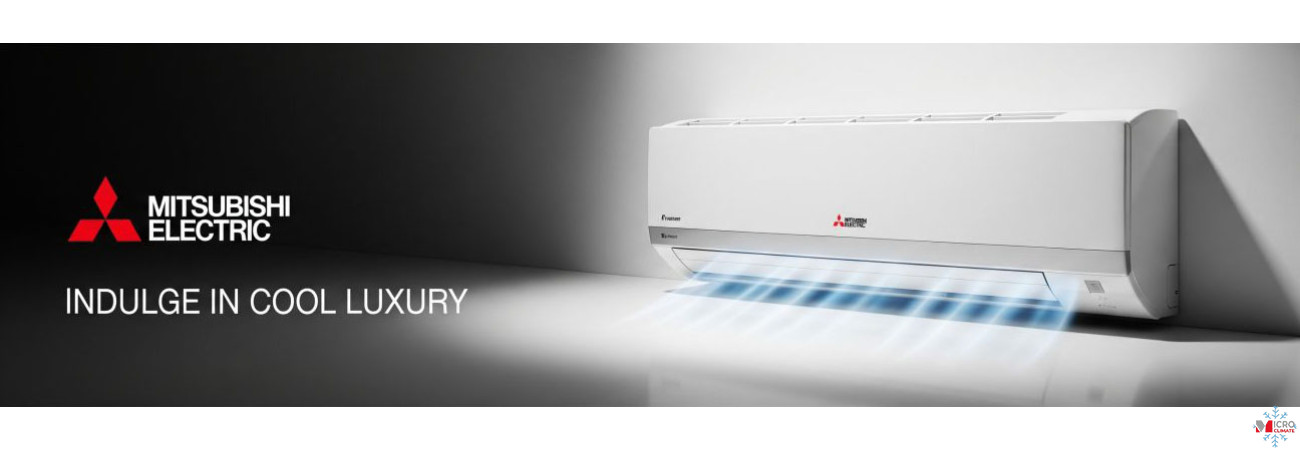
Creating a pleasant indoor climate is essential for customer satisfaction in the hospitality sector.
Restaurants and cafés face unique HVAC challenges — fluctuating occupancy, heat from kitchens, and strict hygiene standards.
Modern inverter air conditioning systems provide the flexibility, efficiency, and control required to maintain perfect comfort in these dynamic environments.
Challenges in Hospitality HVAC
Restaurants generate varying heat loads from kitchens, ovens, and lighting. Dining areas demand cooler, quieter air, while kitchens require strong ventilation and temperature extraction.
The ideal system must balance these zones while meeting food safety and comfort requirements.
Zoning and Air Distribution
A well-designed HVAC layout divides the space into thermal zones:
-
Dining areas: steady 21–23 °C, low air velocity (< 0.25 m/s).
-
Kitchen zones: strong extraction with make-up air supply.
-
Entry areas: air curtains or cassette units to prevent drafts.
Using multi-split or VRF systems, each zone can operate independently with its own thermostat.
Ceiling cassette units with 360° airflow ensure even temperature for guests, regardless of table position.
Ventilation and Air Quality
Proper ventilation is vital to remove odours and CO₂ while maintaining oxygen levels.
Heat Recovery Ventilators (HRV) reclaim up to 75 % of exhaust heat, reducing energy waste.
Many modern restaurants combine HRV with ducted air conditioning for optimal comfort and hygiene.
Noise and Aesthetics
Indoor noise should not exceed 35 dB(A) to preserve a relaxing atmosphere.
Ducted or cassette units installed above suspended ceilings operate quietly and invisibly, maintaining interior design integrity.
Brands such as Daikin, Mitsubishi, and Cooper & Hunter provide low-profile models suited for hospitality interiors.
Energy Efficiency
Using inverter-driven compressors and R32 refrigerant, energy costs can be reduced by 30–45 % compared with older fixed-speed systems.
Smart controls with scheduling and occupancy sensors optimise performance during peak and off-peak hours, ensuring efficient operation even during partial load periods.
Air Filtration and Hygiene
Restaurants must maintain clean air to comply with health regulations.
Advanced filters and ionisation systems remove grease particles, smoke, and bacteria.
Regular maintenance — filter cleaning every two weeks in kitchens and quarterly in dining areas — ensures consistent performance and compliance.
Case Study
A 120 m² London café upgraded from a fixed-speed split system to a VRF inverter solution with HRV.
The result: 38 % lower energy bills, stable 22 °C indoor temperature, and improved air freshness, increasing customer satisfaction and dwell time.
Conclusion
Effective climate control is key to comfort, hygiene, and profitability in restaurants and cafés.
By implementing modern inverter air conditioning, heat recovery ventilation, and smart zoning, businesses can create inviting environments that enhance customer experience while maintaining energy efficiency.




